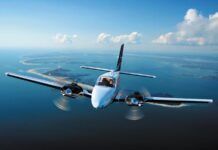When Aviation Consumer reported on new aircraft warranties in the late 1970s, we found that warranties for cars, refrigerators and Zippo lighters bettered what airplane manufacturers offered by a huge margin. At the time, an inexpensive car was around $5000 and an entry-level personal aircraft was around $50,000. Thankfully, warranty administration on today’s new aircraft is much improved, but you’ll pay for it. As we report in the pre-owned aircraft sales article on page 8 of this issue, it’s now possible to get a short, but generous factory warranty even on a used aircraft. Ah, the beauty of quality control and inflated prices.
Back in 1977, the longest warranty most manufacturers could afford to offer on a new aircraft was six months with no hourly limit. There were a few market exceptions, including the newly introduced Meyers 200, which came with a one-year warranty. It’s easy to understand the gripe an owner of a $300,000 aircraft had when left stranded because his new cabin-class twin broke down far from home base. Meanwhile, car makers like American Motors were picking up the hotel and bar tabs for owners waiting for repairs on a $5000 Pacer.

While poring over Cirrus’ extended “pre-flown” warranty for its certified pre-owned aircraft, Senior Editor Rick Durden reminded me how careful aircraft makers were (and still are) to not land themselves in court over written warranty issues. In the delicate environment of questionable warranty reimbursement, consistency is key. If an owner knew someone or some magic word, it wasn’t unheard of for manufacturers to slide them additional coverage or extend coverage for a lapsed warranty. When that cat gets out of the bag, it’s an ugly situation for both dealers and the manufacturer. I’ve witnessed this while working on the shop level and in a day of Internet-based owner groups, it’s a slippery slope. One under-the-table exception can cost millions.
I watched as Cirrus stood its ground last year when the second owner of a first-gen SR22 dealt with damage to the internal composite structure around a fuel tank. This must have been a manufacturing or assembly defect, the owner argued, and expected Cirrus to pick up the tab some 13 years later. Cirrus basically told Jos, “no way,” but when the owner wouldn’t back down, Cirrus sent a representative to comb through the aircraft maintenance logs. I stood over his shoulder as the rep looked at every single maintenance entry, of which most—but not all—were accomplished by Cirrus service centers. If there were never any hands or tools inside of the subject wing area which could have cracked the composite structure, my sense was that Cirrus might step up and offer something for the $5000-plus repair invoice. But all bets were off when a log entry revealed a fuel sender swap early in the aircraft’s life. It directly attaches to the area of the damaged structure. After tossing the log on the table, the Cirrus rep graciously offered to buy lunch.
Speaking of quality control, a member of the Cessna Advanced Aircraft Club (CAAC) reached out to me regarding a warranty dispute owners are having involving the fleet of Cessna Corvalis models. The cracking window paint issue on these aircraft is clearly cosmetic and not a structural one, but CAAC believed, based on communication from Cessna a few years ago, it would be corrected under warranty. That hasn’t happened yet and CAAC says Cessna has ceased communications on the matter. Textron communications manager Nikki Rieman told us Textron Aviation is aware of customers experiencing issues with the paint around the windows on the Corvalis and related models and is working diligently to find the best solution to support the aircraft. In the bad old days of aircraft warranties, cosmetic complaints on an out-of-warranty aircraft might not get past a manufacturer’s switchboard operator. —Larry Anglisano





